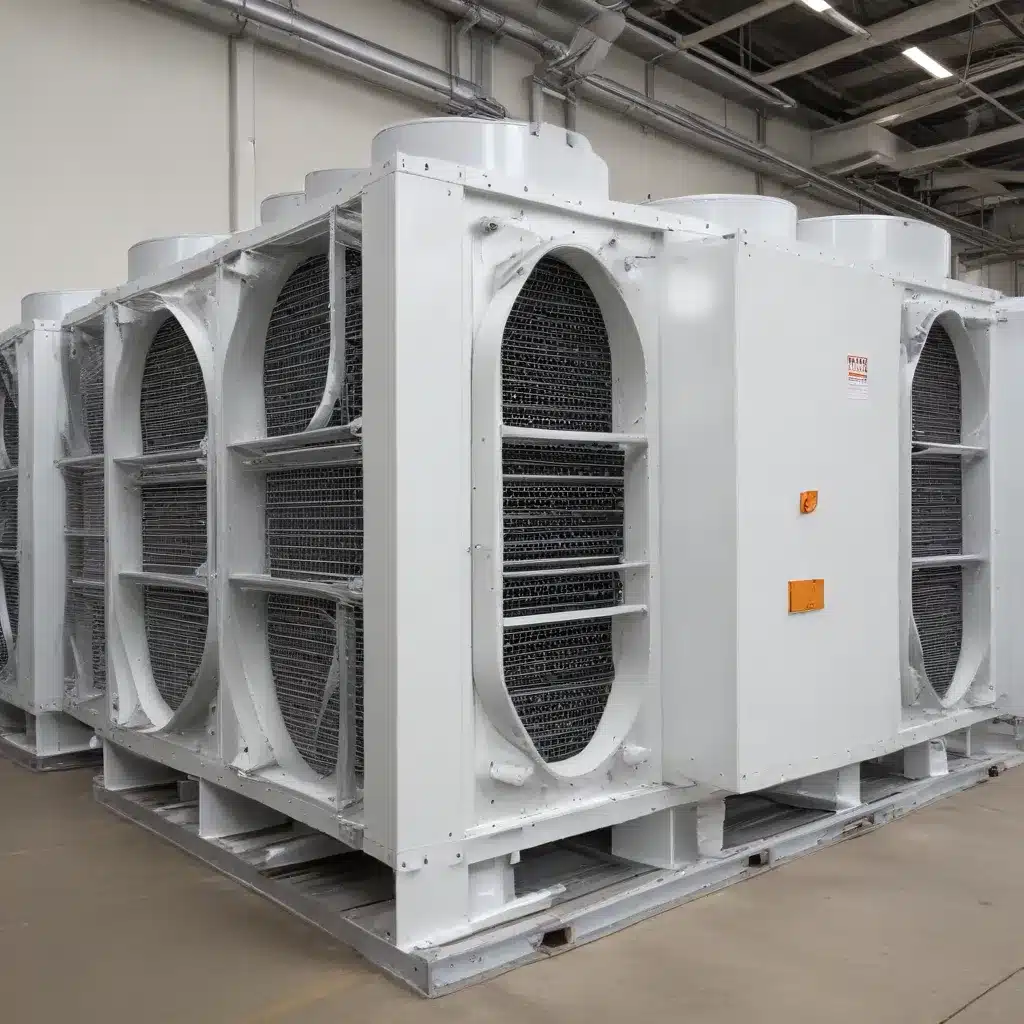
Understanding the Fundamentals of Air-Cooled Heat Exchangers
Heat exchangers are essential components in numerous industrial and commercial applications, playing a crucial role in managing thermal energy transfer. Among the various heat exchanger types, air-cooled heat exchangers, also known as finned-tube heat exchangers, have emerged as a versatile and widely adopted solution.
At their core, air-cooled heat exchangers operate by transferring heat between a fluid, such as water or oil, flowing inside the tubes and the surrounding air. The tubes are fitted with external fins, which significantly increase the surface area available for heat exchange, enhancing the overall efficiency of the system.
The key advantages of air-cooled heat exchangers include:
-
Reduced Water Dependency: In applications where water availability is limited or environmental factors restrict the use of water-cooled systems, air-cooled heat exchangers provide a practical and environmentally friendly alternative.
-
Compact Design: The incorporation of fins allows for a compact heat exchanger design, making them well-suited for installations with space constraints, such as in HVAC systems or industrial facilities.
-
Low Maintenance: Compared to water-cooled systems, air-cooled heat exchangers typically require less maintenance due to the absence of water treatment and fouling concerns.
-
Energy Efficiency: The inherent efficiency of air-cooled heat transfer, combined with advancements in fan and motor technologies, has made these exchangers increasingly energy-efficient, reducing operational costs.
Diverse Applications of Air-Cooled Heat Exchangers
Air-cooled heat exchangers have found widespread adoption across various industries, showcasing their versatility and adaptability to diverse commercial and industrial needs. Let’s explore some of the key application areas:
Power Generation
In power plants, air-cooled heat exchangers play a crucial role in cooling turbine exhaust, condensing steam, and maintaining optimal operating temperatures for generators and other critical components. This application capitalizes on the heat exchanger’s ability to efficiently dissipate large amounts of waste heat to the surrounding air.
Petrochemical and Refining Industries
Air-cooled heat exchangers are extensively used in oil refineries, chemical processing plants, and petrochemical facilities. They are employed for applications such as cooling process streams, condensing vapors, and providing heating or cooling for various unit operations. The robustness and corrosion resistance of air-cooled designs make them well-suited for these demanding industrial environments.
Heating, Ventilation, and Air Conditioning (HVAC)
In the HVAC sector, air-cooled heat exchangers are integral components in air conditioning systems, chillers, and heat pumps. They facilitate the efficient transfer of heat between the refrigerant and the surrounding air, enabling effective cooling and heating of residential, commercial, and industrial spaces.
Data Centers and IT Infrastructure
The growing demand for energy-efficient cooling solutions in the digital age has led to the widespread adoption of air-cooled heat exchangers in data centers and other IT infrastructure. These heat exchangers help maintain the optimal operating temperatures for servers, computers, and other sensitive electronic equipment, ensuring reliable and uninterrupted performance.
Automotive and Transportation
Air-cooled heat exchangers are commonly found in the automotive industry, where they serve as radiators, oil coolers, and charge air coolers. These applications leverage the heat exchanger’s ability to efficiently dissipate heat from the engine, transmission, and turbocharger systems, contributing to improved vehicle performance and reliability.
Industrial Processes
Across a wide range of industrial processes, air-cooled heat exchangers are employed for tasks such as cooling process fluids, condensing vapors, and providing heating or cooling for various unit operations. Industries that heavily utilize air-cooled heat exchangers include food and beverage processing, pharmaceuticals, chemical manufacturing, and mining.
Optimizing Air-Cooled Heat Exchanger Performance
Achieving optimal performance and energy efficiency from air-cooled heat exchangers requires a deep understanding of design principles, maintenance practices, and operational considerations. Let’s explore some key strategies for maximizing the potential of these versatile devices:
Design and Selection
When selecting an air-cooled heat exchanger, it’s essential to carefully consider factors such as the required heat transfer rate, fluid properties, ambient conditions, and space constraints. Proper sizing and configuration of the heat exchanger’s components, including the tube and fin geometry, can significantly impact its thermal efficiency and operational effectiveness.
Maintenance and Troubleshooting
Regular maintenance and proactive troubleshooting are crucial for ensuring the long-term reliability and performance of air-cooled heat exchangers. This includes tasks such as cleaning the fins and tubes, inspecting for fouling or corrosion, and addressing any issues with the fans or motors. By adhering to manufacturer recommendations and implementing best practices, users can maximize the lifespan and efficiency of these critical systems.
Operational Optimization
Optimizing the operation of air-cooled heat exchangers can lead to substantial energy savings and improved overall system performance. Strategies may include adjusting fan speeds, monitoring and controlling airflow, and implementing advanced control systems that adapt to changing environmental conditions or process requirements.
Advancements in Air-Cooled Heat Exchanger Technology
The field of air-cooled heat exchangers is continuously evolving, with ongoing research and development driving improvements in areas such as materials, fin designs, and fan technologies. Incorporating the latest advancements can further enhance the efficiency, reliability, and versatility of these heat exchangers, making them an increasingly attractive option for diverse commercial and industrial applications.
Embracing the Future of Air-Cooled Heat Exchangers
As the demand for sustainable, energy-efficient, and cost-effective thermal management solutions continues to grow, air-cooled heat exchangers are poised to play an even more significant role in shaping the future of various industries. By leveraging the inherent advantages of these versatile devices and staying attuned to the latest technological advancements, professionals in the field can unlock new opportunities and drive innovation across a wide range of commercial applications.
To stay informed on the latest developments and insights regarding air-cooled heat exchangers, be sure to visit our website and explore our comprehensive resources. Together, let’s continue to push the boundaries of what’s possible with these remarkable thermal management solutions.

